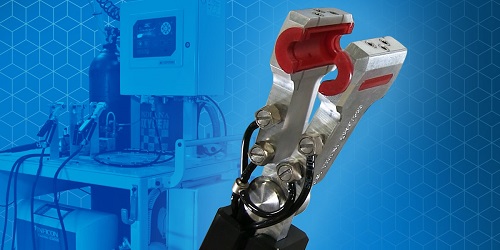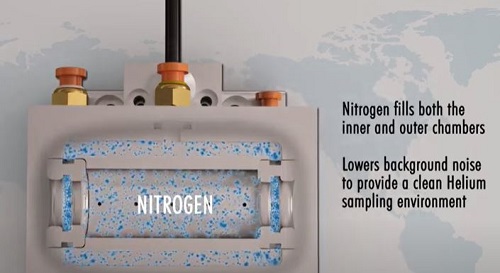How to achieve accurate low leak rate testing: Adapting to new manufacturing standards in the refrigeration and air conditioning industry
Leak testing of pipe joints, tubes and fittings in refrigeration and air conditioning components such as coils and compressors during assembly manufacturing is critical. Tests must be accurate and reliable, or products could have serious problems for consumers in the field.
Recent changes to the types of refrigerants manufacturers are required to use have also made this testing process more complex. Let us explore these changes and how manufacturers can ensure an accurate and reliable leak test under these new parameters.
The replacement refrigerants are more energy-efficient and environmentally safe. Two popular ones are: R1234yf and R600. Manufacturers now must design products that operate utilizing these new more environmentally friendly refrigerants.
Unfortunately for manufacturers, these refrigerants have a flammable variant and are more expensive. Thus, the systems are being designed to use less gas, and the allowable and designated leak of refrigerant from a product has become less.
This means that leak testing must be very effective. The permissible leak rate is now 0.5 grams of refrigerant loss per year. This is comparable to one 3mm bubble being released underwater, every 1.2 hours (equates to mid 10-6 scc/sec range).
To accommodate these background issues and test at a lower rate where your background is actually higher than your reject rate, one option is to integrate sniff leak test booths where you control the background environment by constantly moving air through the booth—controlling how much of the background remains constant at 5ppm.
Another option is nitrogen purge testing.
CTS’ patented nitrogen purge technology solution combines our TracerMate II leak test and tracer gas management instrument with specially designed purging clamshell hand fixture devices.
During the part charge cycle, Nitrogen is also routed into the test area once the chamber is closed to purge the background out of the small chamber so that when we start measuring helium, we’re measuring it against the nitrogen background, not the 5ppm background that’s in normal atmosphere.
Benefits of using a purging clamshell device:
Recent changes to the types of refrigerants manufacturers are required to use have also made this testing process more complex. Let us explore these changes and how manufacturers can ensure an accurate and reliable leak test under these new parameters.
Refrigerant system changes: changes and affects
Recent changes to testing requirements in the refrigeration and air conditioning industries have dictated that refrigerants like R134A, R410A, and R404A are considered greenhouse gases and not environmentally safe.The replacement refrigerants are more energy-efficient and environmentally safe. Two popular ones are: R1234yf and R600. Manufacturers now must design products that operate utilizing these new more environmentally friendly refrigerants.
Unfortunately for manufacturers, these refrigerants have a flammable variant and are more expensive. Thus, the systems are being designed to use less gas, and the allowable and designated leak of refrigerant from a product has become less.
This means that leak testing must be very effective. The permissible leak rate is now 0.5 grams of refrigerant loss per year. This is comparable to one 3mm bubble being released underwater, every 1.2 hours (equates to mid 10-6 scc/sec range).
How to achieve accurate low leak rate testing
Since these leak rates are getting lower and lower, it’s getting harder to locate these leaks with simple open-air sniffer or conventional clamshell testing.To accommodate these background issues and test at a lower rate where your background is actually higher than your reject rate, one option is to integrate sniff leak test booths where you control the background environment by constantly moving air through the booth—controlling how much of the background remains constant at 5ppm.
Another option is nitrogen purge testing.
Using nitrogen purge technology to control background
Nitrogen purge technology is a great way to minimize false rejects and increase repeatability by controlling trace gas background.CTS’ patented nitrogen purge technology solution combines our TracerMate II leak test and tracer gas management instrument with specially designed purging clamshell hand fixture devices.
Purging clamshell for repeatable low leak rate testing
With this nitrogen purge technology, we take a small clamshell device and route nitrogen through it in two places; in the test chamber and seal area. Using a constant flow of nitrogen in the seal area, we avoid background air crossing the seal channel where the clamshell comes to a close.During the part charge cycle, Nitrogen is also routed into the test area once the chamber is closed to purge the background out of the small chamber so that when we start measuring helium, we’re measuring it against the nitrogen background, not the 5ppm background that’s in normal atmosphere.
Benefits of using a purging clamshell device:
- Eliminates operator dependence
- Isolates background
- Eliminates false failures
- Control poor background and gross leaks
All-in-one nitrogen purge solution: TracerMate II HVAC-R Test Cart
To make set up and testing as easy as possible, CTS created an all-in-one nitrogen purge solution: the TracerMate II HVAC-R Test Cart. It integrates the TracerMate II along with a vacuum source and leak detection device, connected and controlled through the TracerMate II. The cart also delivers trace gas and has a nitrogen tank mounted right on the cart. You can then connect as many probes as needed for your automated or manually operated testing (up to 20 different locations). LEARN MORE ABOUT TURNKEY CART
Download our new guide to learn how to choose the right testing methodology for your refrigerant system and optimize your current testing process.




